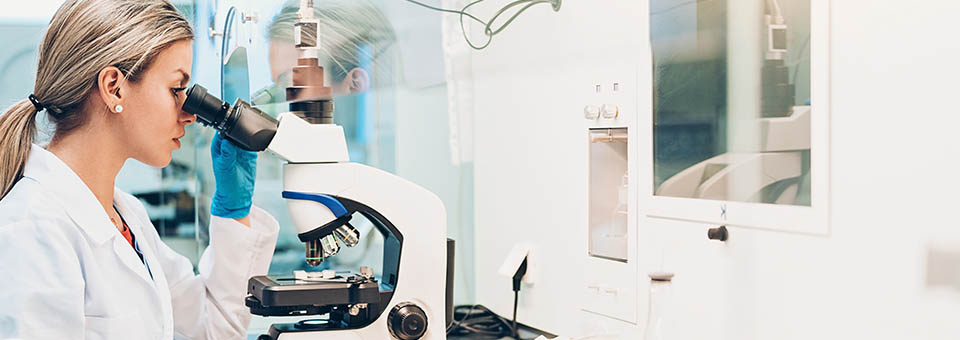Many of my colleagues in the medical profession still underestimate the incredible, self-healing power inside your own body.
I’m talking about your stem cells.
In nearly 20 years at my Sears Institute for Anti-Aging Medicine, I’ve learned you can reawaken stem cells that slip into a state of hibernation as you age.1
Once you have a youthful fountain of activated stem cells at your disposal, your body has a remarkable ability to replace aged, damaged, and senescent cells with brand new ones.
Stronger Stem Cells = Stronger You
One way to reawaken slumbering stem cells is physical exertion. And I’m not the only one saying this. Researchers at Stanford University recently proved it.
They put old mice on a strength training program and after a few weeks, these old mice became stronger, healthier, more limber.
Then, researchers took their blood and injected it into other old mice that were inactive couch potatoes. The result was fascinating.
The inactive mice suddenly took on the same youthful characteristics of mice that went through physical training. Their stem cells were reawakened.2
Studies on humans show similar results. After exertion, your body signals your bone marrow to release stem cells into your blood.
I recommend more than just one pathway to keeping your stem cells young. With that in mind, why not enjoy a post-workout meal of blueberries and grass-fed beef?
What Your Stem Cells Love to Eat…
I realize blueberries and steak might sound like an unusual pairing — but your body loves them! Grass-fed, pasture-raised meat is packed with carnosine, a molecule shown to supercharge stem cells.
In one study the carnosine-blueberry combination ramped up stem cell activity by a stunning 83%.3
There is no plant-based source of carnosine, by the way. The only natural source is meat and your body has
to have it.Carnosine zaps free radicals before they have a chance to damage your DNA, and exerts “an anti-senescence effect” on your cells.4
It also helps prevent high blood sugar from damaging kidneys, heart, eyes and other vital organs.5
Even if you’re a meat lover, chances are pretty good you’re not getting enough carnosine.
Here’s why… Let’s say you down a 7-ounce hamburger. In about 15 minutes, your carnosine level begins to rise. That’s good.
But within a few hours, the carnosine in your blood begins to drop. That’s because the enzyme carnosinase breaks down carnosine right away.
Unless you eat more meat or take a supplement, ALL traces of carnosine will disappear from your blood in less than six hours.6 That’s how quickly it dissipates.
So in addition to eating plenty of red meat, you also should supplement with 500 mg twice a day to keep carnosine circulating throughout your body. Look for the natural form of carnosine, not a supplement labeled “bio-identical” or “nature-identical.” Those are synthesized in a lab and they’re harder to absorb.
With nutrition, you always want to stick as close to the natural form as possible.
To Your Good Health,

Al Sears, MD, CNS
1. Harvard Stem Cell Institute, “Stem cells need time to sleep.” Retrieved January 21, 2021, from hsci.harvard.edu website: https://hsci.harvard.edu/stem-cells-need-time-sleep
2. Conger, K., Stanford University, (2020, April 13). “Exercise restores youthful properties to muscle stem cells of old mice.” Retrieved January 21, 2021, from News Center website: http://med.stanford.edu/news/all-news/2020/04/exercise-restores-youthful-properties-to-muscle-stem-cells-of-ol.html
3. Wang AM, Ma C, et al. “Use of carnosine as a natural anti-senescence drug for human beings.” Biochemistry (Mosc.).
4. Wang, A. M., Ma, C., Xie, Z. H., & Shen, F. (2000). Use of carnosine as a natural anti-senescence drug for human beings. Biochemistry. Biokhimiia, 65(7), 869–871. Retrieved from https://pubmed.ncbi.nlm.nih.gov/10951108/
5. Janssen, B., Hohenadel, D., Brinkkoetter, P., Peters, V., Rind, N., Fischer, C., … Bartram, C. R. (2005). Carnosine as a protective factor in diabetic nephropathy: association with a leucine repeat of the carnosinase gene CNDP1. Diabetes, 54(8), 2320–2327. https://doi.org/10.2337/diabetes.54.8.2320
6. Park, Y. J., Volpe, S. L., & Decker, E. A. (2005). Quantitation of carnosine in humans plasma after dietary consumption of beef. Journal of Agricultural and Food Chemistry, 53(12), 4736–4739. https://doi.org/10.1021/jf047934h

